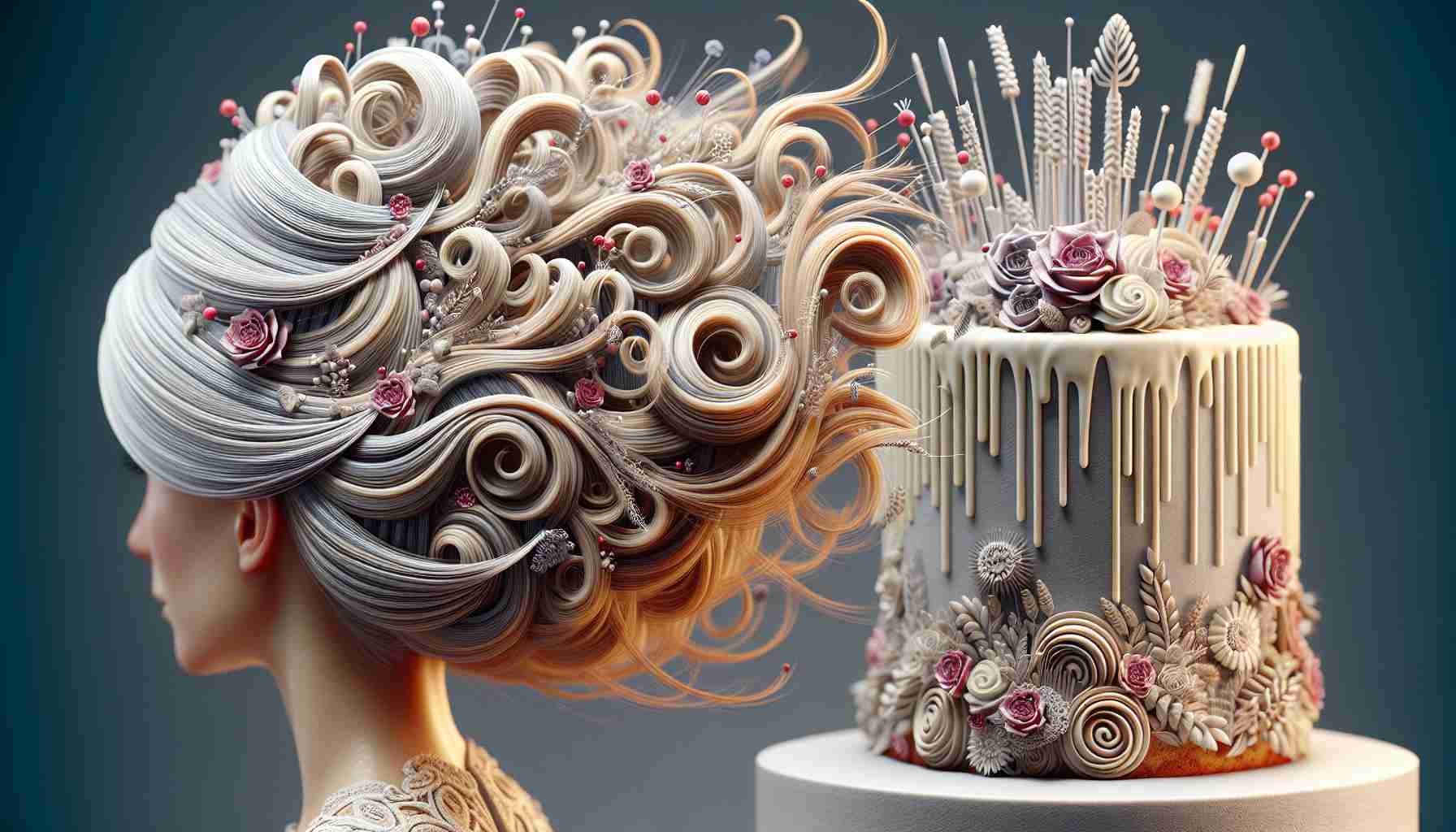In a surprising twist, hair salons and bakeries are facing an unconventional challenge: customers bringing in AI-generated images for inspiration. The Canadian news outlet CBC reports that salon owner Dean Allan from Edmonton is encountering clients who unknowingly show fictitious hairstyles generated by artificial intelligence.
Growing Trend in Beauty and Baking
While most of Allan’s clients are aware that these colorful, intricate images are AI-crafted, they still bring them in, setting high expectations. Unfortunately, these expectations can be far from reality. Allan stresses the importance of managing these unrealistic ambitions, explaining that many aspects of these fantasy styles simply cannot be reproduced in real life. He often advises his clients to opt for achievable looks to avoid disappointment.
This phenomenon isn’t limited to hair. Olivia Hua, who owns a cake company, has observed a similar trend. Recently, she encountered a peculiar request for cupcakes shaped so realistically like cats. “They seemed almost lifelike, more art than cake,” Hua describes, pointing out the fantasy and complexity brought by AI images.
The Illusion of Perfection
Social media platforms like Facebook and Pinterest often blur the lines between reality and fantasy, leading customers to fall for captivating illusions. As AI technology advances, the difficulty in distinguishing real from fake is bound to increase, stirring a new wave of impossible trends. This trend raises questions about how far AI art will influence our perceptions and desires, leaving professionals in the beauty and culinary industries to handle the fallout.
The AI Art Paradox: A Blessing or a Challenge for Creativity?
The Evolution of AI in Everyday Life
Artificial intelligence has rapidly evolved and is increasingly woven into the fabric of various societal sectors, playing a pivotal role in transforming industries and affecting human creativity. Among the new phenomena are AI-generated images becoming sources of inspiration in non-traditional fields like hair styling and baking, sparking both intrigue and concern. This evolution impacts not just individual trades but broader technological development and societal perceptions of art and reality.
Controversies Stirred by AI-Created Art
AI-generated imagery, while mesmerizing and novel, presents several controversies. It raises questions about artistic authenticity and the value of human creativity. If an algorithm can create intricate and appealing designs, where does that leave artists and craftsmen? This dilemma is at the forefront of debates about AI’s role in creative industries.
A significant question is whether AI-generated art can be considered “real” art. Can something artificial hold intrinsic artistic value, or does it diminish the work of human creators by merely mimicking rather than innovating? As AI tools become more sophisticated, these questions become more pressing.
Impacts on Technological Development and Human Perception
AI’s influence on creative domains like hairstyling and baking is a microcosm of its potential across broader fields. The allure of AI’s capabilities pushes technology developers to stretch the boundaries of what’s achievable, encouraging faster innovation. Simultaneously, it also challenges our perceptions, altering how we define art, creativity, and originality.
However, this also poses a challenge as people struggle to differentiate between realistic possibilities and AI-generated fantasy. This discrepancy may lead to dissatisfaction and confusion when real-world capabilities can’t match digital fantasies.
Advantages and Disadvantages
One advantage AI presents is an unprecedented wellspring of inspiration, offering individuals new ways to visualize ideas that were previously unseen. AI can potentially democratize creativity, allowing more people, regardless of their artistic skill, to experiment with design.
On the downside, AI-generated images may set unrealistic standards, causing frustration among professionals tasked with replicating these images. Additionally, AI’s ability to flawlessly create images can overshadow the unique imperfections that often bestow character and value to human-made art.
Can AI Complement Rather Than Compete?
An important consideration is how AI can complement human effort rather than compete with it. Could AI serve as an assistant in the creative process, offering suggestions and expanding possibilities while human creators maintain control over the final product?
This potential synergy could yield exciting results, combining the precision and breadth of AI with the nuanced understanding of context, emotion, and individuality offered by human artists.
In conclusion, while AI’s advancing capabilities pose relevant challenges, they also provide exciting new possibilities. The key for professionals in various fields is to leverage these tools effectively, enhancing their work without sacrificing the authenticity that comes from human creativity and expertise.
For more insights on how AI is transforming industries, visit CBC or Pinterest.
